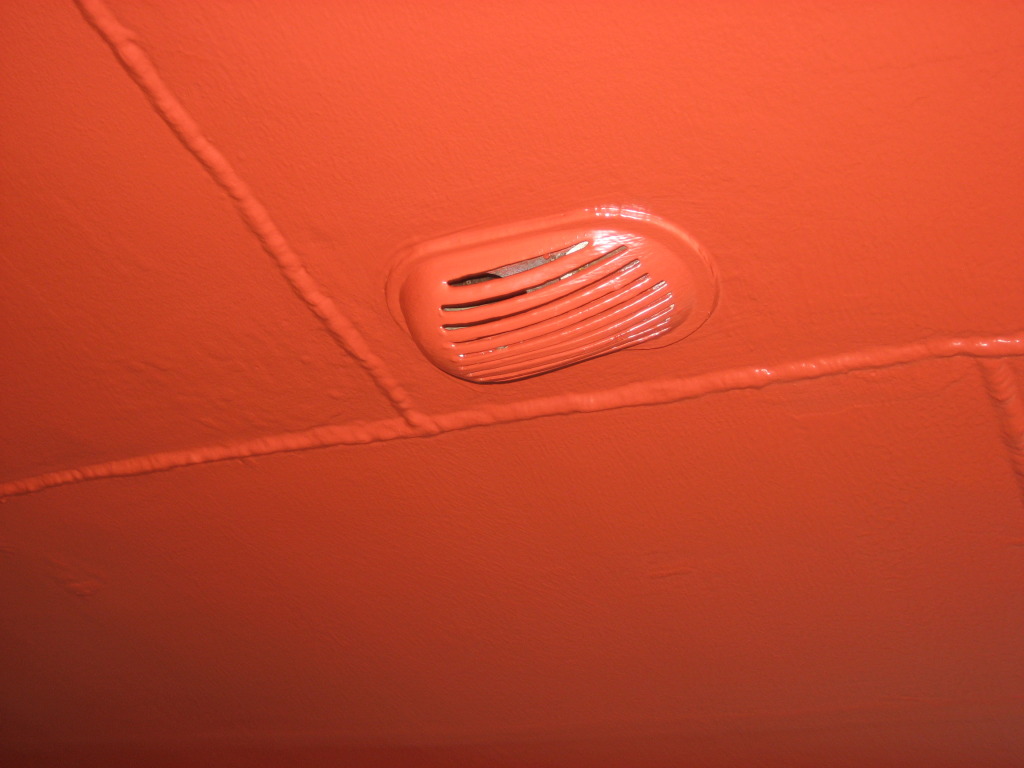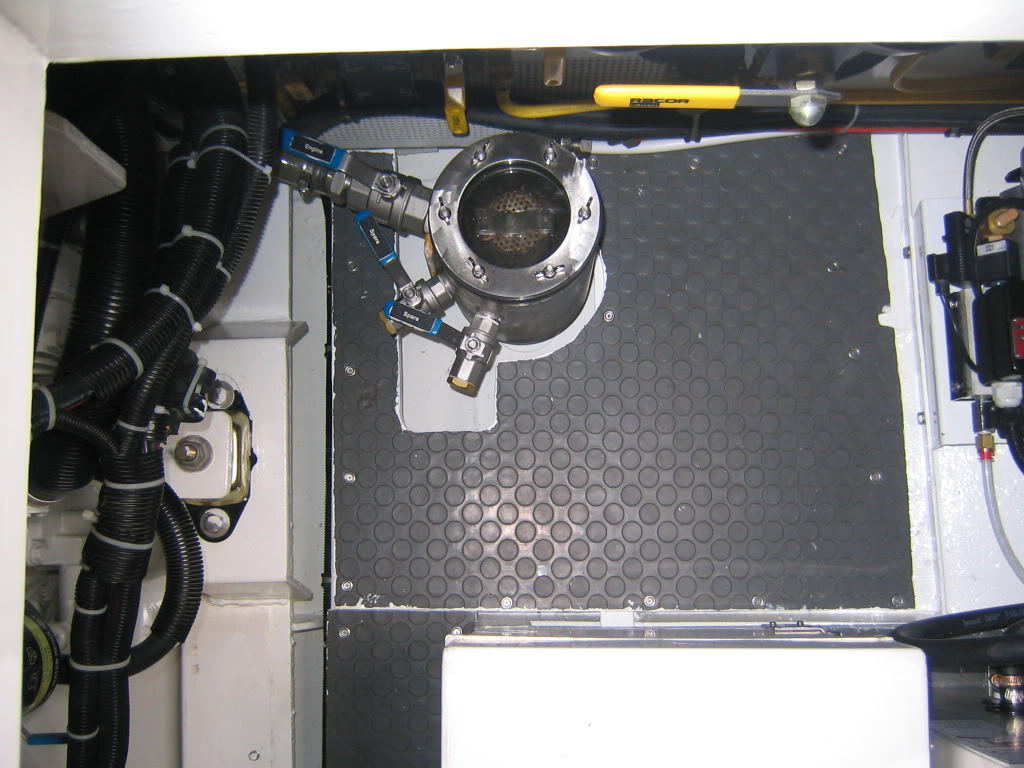markpierce
Master and Commander
- Joined
- Sep 25, 2010
- Messages
- 12,557
- Location
- USA
- Vessel Name
- Carquinez Coot
- Vessel Make
- penultimate Seahorse Marine Coot hull #6
This is the Coot's raw-water intake. What does yours look like?



Can't really tell in Mark's picture, but is the strainer facing fore or aft? Does it make a difference?
dvd
Can't really tell in Mark's picture, but is the strainer facing fore or aft? Does it make a difference?

Can't really tell in Mark's picture, but is the strainer facing fore or aft? Does it make a difference?
dvd
no screens...REALLY easy to clean now from the inside...

Right of picture is main engine (forward facing) and left of picture is gen-set (aft facing).

....nd prefer not diving under the boat to clean out screens or anything else.
We've never had to have anyone dive on our intakes and covers but once. And that was not to clean them out but to scrape off barnacles that had partially covered the perforated plate over the port engine raw water intake because we'd gone too long between bottom jobs. Engine started to run warm so we shut it down and finished the last bit of the run to an island on one. A friend on the island dove on the boat and cleaned off the barnacles.
I can see how the scoop-type covers could get clogged and require a diver to clear or a haulout. And I agree, that would be a pain either way. But our simple convex bronze plates won't trap anything or scoop it in. But they do a good job because we've so far never gotten anything in the filter cages of the big sea strainers we had installed when we got the boat.
I prefer them too for our slower boats...If I wind up thinking I need something...they are what I would use.
do you have externals and if so what kind?All I know is that after my 2200 mile 3 month trip this summer I had nothing at all inside my water strainer basket. Much of the time I was in 6 feet of water that was loaded with weeds. In fact I had to stop and go into reverse many times on the trip to clear the weeds off the prop.
So my strainer system works good enough.
do you have externals and if so what kind?
IN Florida the "best" intake has no intake cover.
The concept is to have the hose easily detachable at 3 or 4 ft into the boat , preferably slightly above the WL..
There should be enough room to disconnect the hose and ram a broomstick in and out with vigor. A basket strainer must be before the engine , no rule it must be on the seacock.
Beware many of the jelly fish parts will still sting even after they are mashed , so use a dedicated stick !
This is also good for sinks where grease might slow the flow.
Andy, did someone forgot to remove and antifoul inside the intake last time?Guilty as charged M'lord, I throw myself on the mercy of the court.
There are eleven holes in the bottom of our boat. Eight of them are intakes and they all have the perforated bronze plates over them.
